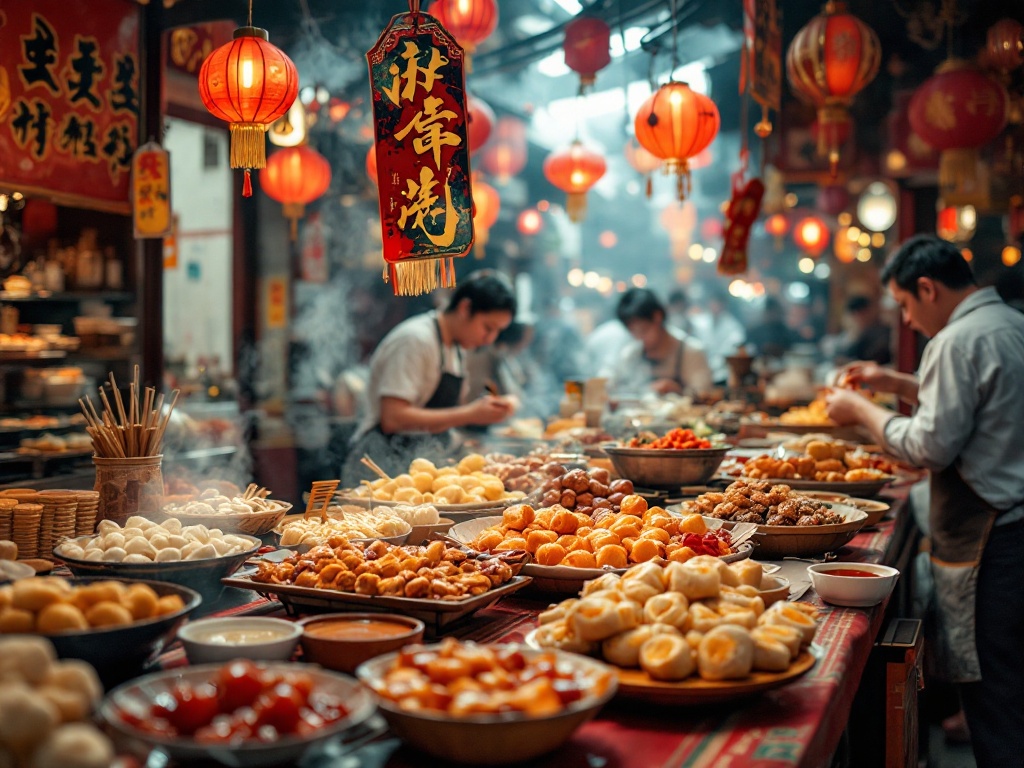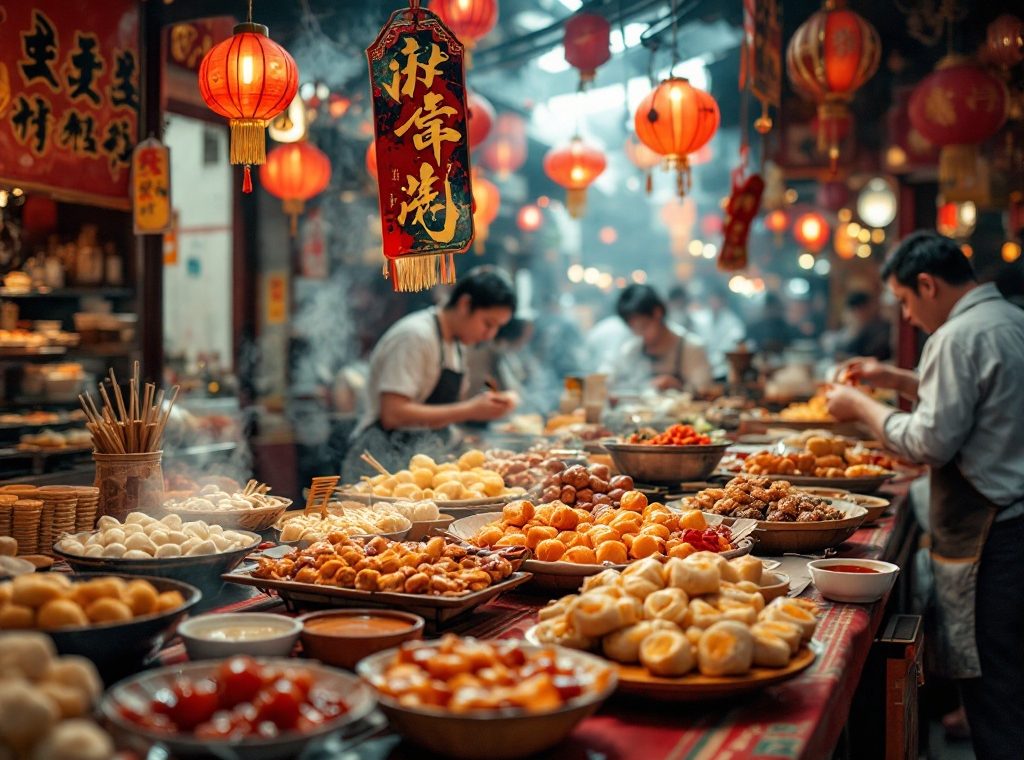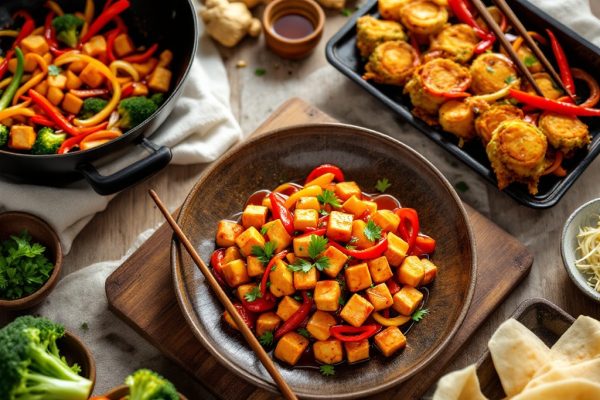A Culinary Adventure: Exploring the World of Chinese Snacks
Embark on a culinary adventure through the diverse world of Chinese snacks! From savory dumplings enjoyed during festivals to sweet pastries savored in daily life, these treats offer a delicious glimpse into China’s rich history and vibrant culture. Discover the imperial influences on modern street food, explore the unique regional flavors from Sichuan’s fiery cuisine to Guangdong’s delicate dim sum, and even delve into the adventurous world of scorpion kebabs. Uncover the secrets of Chinese cuisine and expand your culinary horizons – continue reading to learn more and savor the taste of China!
Important information

- Chinese snacks, from dumplings to pastries, are a key part of daily life and special occasions, reflecting China’s diverse regions and rich culinary traditions.
- Imperial cuisine has heavily influenced modern Chinese snacks, with many street foods originating from dishes once exclusive to royalty.
- Chinese snacking offers a cultural experience, connecting people during festivals and social gatherings and showcasing regional variations like Sichuan’s spicy dishes and Guangdong’s dim sum.
- From scorpion kebabs to stinky tofu, adventurous snacks highlight the unique and diverse culinary landscape of China.
- Asian and Chinese supermarkets offer a vast selection of snacks and ingredients, providing a gateway to exploring authentic Chinese cuisine and its regional specialties.
The Essence of Chinese Snacks: A Culinary Adventure
Chinese snacks offer a delicious adventure, showcasing the country’s diverse regions and rich traditions. From savory dumplings to sweet pastries, these treats are an integral part of Chinese cuisine, enjoyed during festivals, social gatherings, and everyday moments. This prevalence highlights China’s fascinating history and culinary artistry, offering a unique glimpse into its vibrant culture. Whether purchased from street vendors or prepared in family kitchens, these snacks represent China’s varied culinary landscape and are a true treasure of its food heritage.
What Makes Chinese Snacks Unique?
Chinese snacks offer a unique culinary experience, distinguished by their intricate preparation. Noodle-making, for instance, involves an elaborate process of folding, pulling, stretching, and twisting, resulting in a delightful array of textures and tastes. The use of regional ingredients and time-honored cooking techniques further enhances their distinctive character.
Exploring Chinese Food History and Traditions
Chinese cuisine’s rich history is intertwined with the opulence of imperial kitchens. Skilled chefs in these culinary centers developed elaborate dishes using specialized techniques. These traditions eventually influenced commoners, shaping street food and snacks. This legacy is evident in modern Chinese cuisine’s complex flavors and artistic presentation. Cantonese dim sum, originating in tea houses frequented by imperial officials, exemplifies this influence. Similarly, Peking duck, an imperial favorite, inspired street food versions. This imperial influence has profoundly shaped Chinese food culture, contributing to its diversity and richness.
The Historical Influence of Imperial Cuisine on Modern Snacks
China’s street food scene owes a surprising debt to the emperors of old. Dishes once exclusively prepared for royalty are now commonplace, reflecting a significant shift in Chinese society and culinary culture. For example, readily available dumplings and pastries are often simplified versions of elaborate imperial recipes. This wider availability speaks to greater access to both ingredients and cooking techniques. While the imperial influence is clear, modern adaptations have democratized these treats, making them enjoyable for everyone.
Cultural Exploration Through Chinese Snacks
Chinese snacks offer a delicious glimpse into the country’s vibrant culture. Integral to social gatherings, festivals, and family traditions, they symbolize connection and shared experiences. Their diverse flavors and preparation methods reflect regional variations and historical influences, showcasing China’s rich culinary heritage. From savory dumplings to sweet pastries, each snack tells a unique story, offering a taste of Chinese culture with every bite. Exploring these treats is a true culinary adventure, revealing the deep connection between food and cultural identity in China.
A Culinary Adventure: Insights into Chinese Food Culture
Chinese food culture has a rich history, and snacks are essential to this tradition. These treats offer a glimpse into China’s diverse regions, showcasing unique cooking techniques and cultural practices. They are enjoyed during gatherings and as part of daily life, highlighting their significance in Chinese society. Exploring these snacks offers a deeper understanding of China’s culinary heritage.
Taste and Experience: The Sweet and Sour of Chinese Cuisine
Chinese cuisine is renowned for its delightful sweet and sour combinations, achieved with simple ingredients like vinegar, sugar, and fruit. Supermarkets readily stock these fresh components, allowing shoppers to easily recreate this signature balance at home. This dynamic interplay of flavors creates a truly unique and memorable dining experience, capturing the essence of Chinese cuisine.
Regional Flavors and Techniques in Chinese Snacks
Chinese snacks offer a thrilling culinary journey, from Sichuan’s fiery tofu and hot pot dumplings to Guangdong and Fujian’s delicate vegetarian dim sum. Noodle flicking and other unique techniques enhance the distinctive flavors of each region. Northern China savors wheat-based treats like pancakes and steamed buns, while the South favors rice-based snacks. These regional variations showcase the diverse ingredients and cultural influences that shape China’s rich food traditions.
Unveiling Sichuan Province: Spicy and Bold Flavors
Sichuan province is famous for its unique peppercorns, which create a distinctive tingling numbness essential to Sichuan cuisine. This unique sensation, often described as “ma la,” combines the numbing effect of the peppercorns with a spicy heat. Dishes such as mapo tofu and dan dan noodles perfectly showcase these bold flavors. Other key ingredients frequently used in Sichuan cuisine include chili peppers, garlic, and ginger, further enhancing the vibrant and complex taste profiles of the dishes.
Vegetarian Food: Discovering Guangdong and Fujian Cuisine
Guangdong cuisine is famous for its dim sum and diverse vegetarian options. These include steamed buns filled with fresh vegetables and delicate tofu skin rolls. Fujian cuisine is equally impressive, featuring dishes like the complex vegetarian soup, Buddha Jumps Over the Wall. This soup is known for its medley of ingredients. Both Guangdong and Fujian styles emphasize fresh, seasonal produce and natural flavors, creating light, healthy, and delicious dishes.
Travel and Food: A Culinary Exploration in China
Scorpion kebabs are a unique and adventurous street food popular in some parts of China. This daring culinary experience highlights the diversity of Chinese cuisine.
Scorpion Kebabs and More: Unusual Snack Discoveries
Scorpion kebabs, a popular Chinese street food, exemplify the adventurous nature of Chinese snacks. From chicken feet to duck tongues and the infamous stinky tofu, these unusual delicacies are ubiquitous, showcasing China’s diverse culinary landscape and a cultural embrace of unique food experiences.
Discovering Chinese Snacks in Global Markets
Asian, particularly Chinese, supermarkets are a snack enthusiast’s paradise. They offer a vast selection beyond the familiar, from savory dumplings and crispy spring rolls to fluffy baozi. Discover unique regional specialties, like the fiery snacks of Sichuan or the delicate dim sum of Canton. Aspiring home cooks can find all the necessary ingredients, while those seeking convenience can grab ready-made treats. Sampling diverse flavors is effortless, making exploration a true cultural immersion. It’s more than a grocery trip; it’s a delicious journey into authentic Chinese snacking culture, a chance to uncover new favorites and expand your culinary horizons.
The Experience of Shopping in Asian and Chinese Supermarkets
Asian, particularly Chinese, supermarkets offer a unique culinary adventure. They are filled with a wide variety of snacks and the freshest produce, while also serving as a one-stop shop for essential Chinese cooking ingredients. These markets emphasize the important role of food in Chinese culture. They showcase unique ingredients and traditional cooking methods, providing a genuine taste of their rich heritage. For those seeking an authentic culinary experience, these markets offer invaluable insights into Chinese culinary traditions.

















